Kargil Area
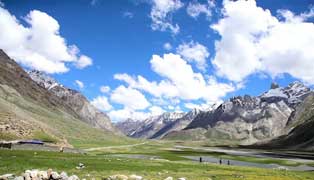
Kargil district is around 205 kms to the east of Srinagar and 230 kms to the west of Leh. It was a transit point of caravans on their way to and from China, Tibet, Yarken and Kashmir till 1949, but since 1974 with the influx of tourists the region has been replaced as centre for tourism related activities. Tourists traveling between Zangskar, Leh and Srinagar have to make a night halt here, before starting for the second day of their journey.
Kargil is located on the bank of the Suru River which flows at around 10,000 ft. high. People were followers of Buddhist religion till the 14th century AD. Presently, Kargil is inhabited by Muslims of Shia sect.
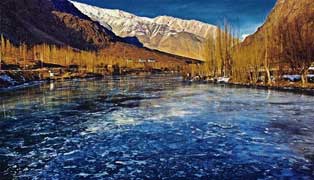
Suru valley has a beautiful landscape to view, especially when it gets dotted by flowers in the summer. The valley expands from Kargil town upto the Penzi La watershed, from where the Suru River rises. The valley constitutes a large population, mainly of Tibetan-Dard Muslims, who converted to Islam in the 15th century. The peaks of Nun (7,135m) and Kun (7,035m) Massif add to the beautification of this region.
Kartse Khar: The Kartse Khar (palace) is an ancient village known for its 7 m tall rock carved statue of Maitriya Buddha which is an evidence of the presence of Buddhist community in the valley in the past. There are other magnificent Stupas and rock carved statues to be seen in Suru valley, if one wishes to explore.
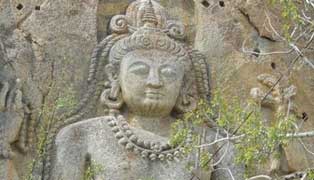
Panikhar is the best station to undertake mountaineering expeditions to the various Peaks surrounding the valley. Tanyol, the approach base for climbing Mt. Nun, is just 6 kms further up the valley along the road. A short walk up the hill slopes from here takes one across the Sentik Ridge to the base camp on the rim of the ice plateau. Another very interesting hike is to the Nun- Kun view saddle (3810 m) in the Parkachik ridge. This requires 3 hours of walking along verdant slopes overlooking the fertile valley below.
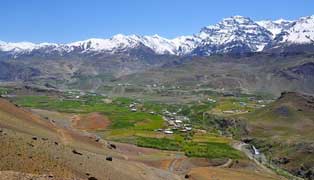
Drass is around 60 kms to the west of Kargil on the road to Srinagar. The place has beautiful pasture grounds and majestic mountain peaks surrounding it. Drass is the second coldest inhabited place in the world, where the temperature goes as low as -50 degrees in winter.
Drass has become famous in recent years because of Pakistan’s misadventure in the Tiger hill and Tolloling areas. One can have a lovely view of Tiger hill from Drass village.
The inhabitants in Drass consist mainly of the Dards stock, an Aryan race believed to have originally migrated to these villages of the western Himalaya from Central Asian steppes. The language they speak is Shina, which is very much unlike the Ladakhi dialects spoken elsewhere in the Ladakh region. Polo is the favorite time pass of the inhabitants of Drass.
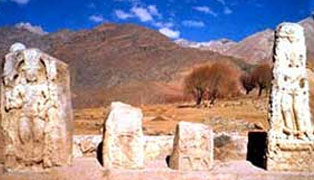
Drass is dominated by Muslims, which was predominantly a Buddhist region, converted to Muslims in 15th Century. The only Buddhist remains of note in the whole area are images carved in relief on stone of Maitriya, Avaloketeshvara, a lotus flower, a man on horseback and a stupa.





